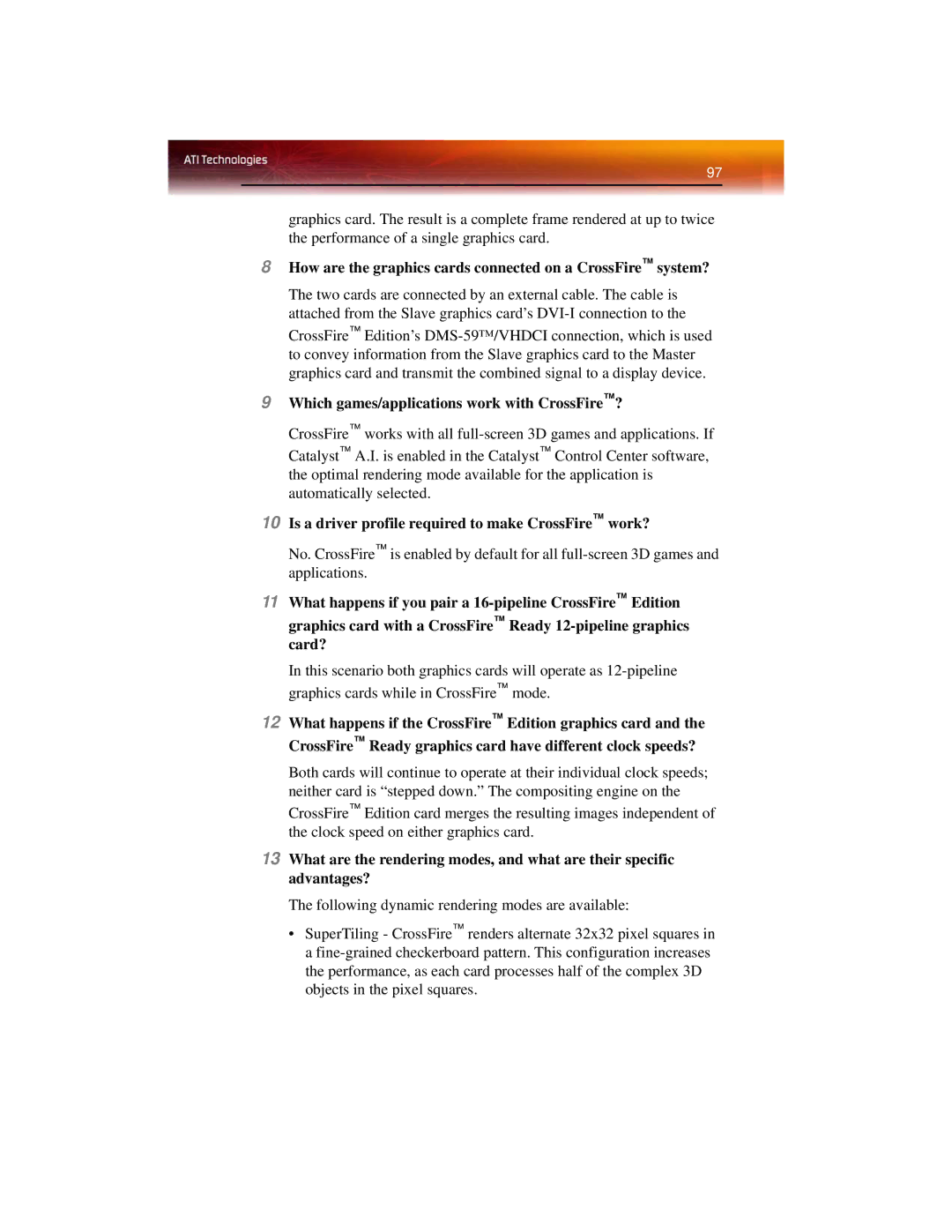
97
graphics card. The result is a complete frame rendered at up to twice the performance of a single graphics card.
8How are the graphics cards connected on a CrossFire™ system?
The two cards are connected by an external cable. The cable is attached from the Slave graphics card’s
9Which games/applications work with CrossFire™?
CrossFire™ works with all
10Is a driver profile required to make CrossFire™ work?
No. CrossFire™ is enabled by default for all
11What happens if you pair a
In this scenario both graphics cards will operate as
12What happens if the CrossFire™ Edition graphics card and the CrossFire™ Ready graphics card have different clock speeds?
Both cards will continue to operate at their individual clock speeds; neither card is “stepped down.” The compositing engine on the CrossFire™ Edition card merges the resulting images independent of the clock speed on either graphics card.
13What are the rendering modes, and what are their specific advantages?
The following dynamic rendering modes are available:
•SuperTiling - CrossFire™ renders alternate 32x32 pixel squares in a
